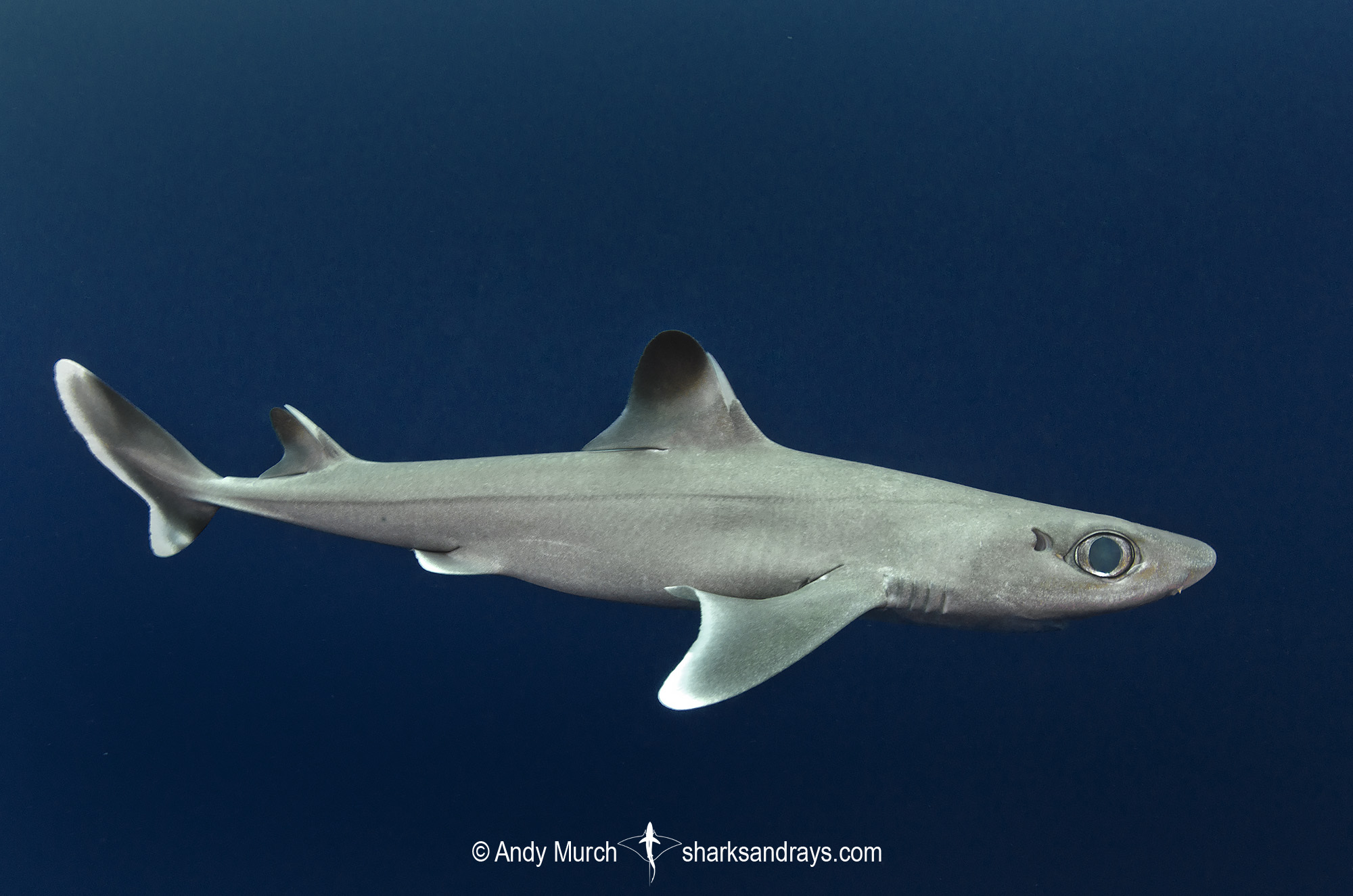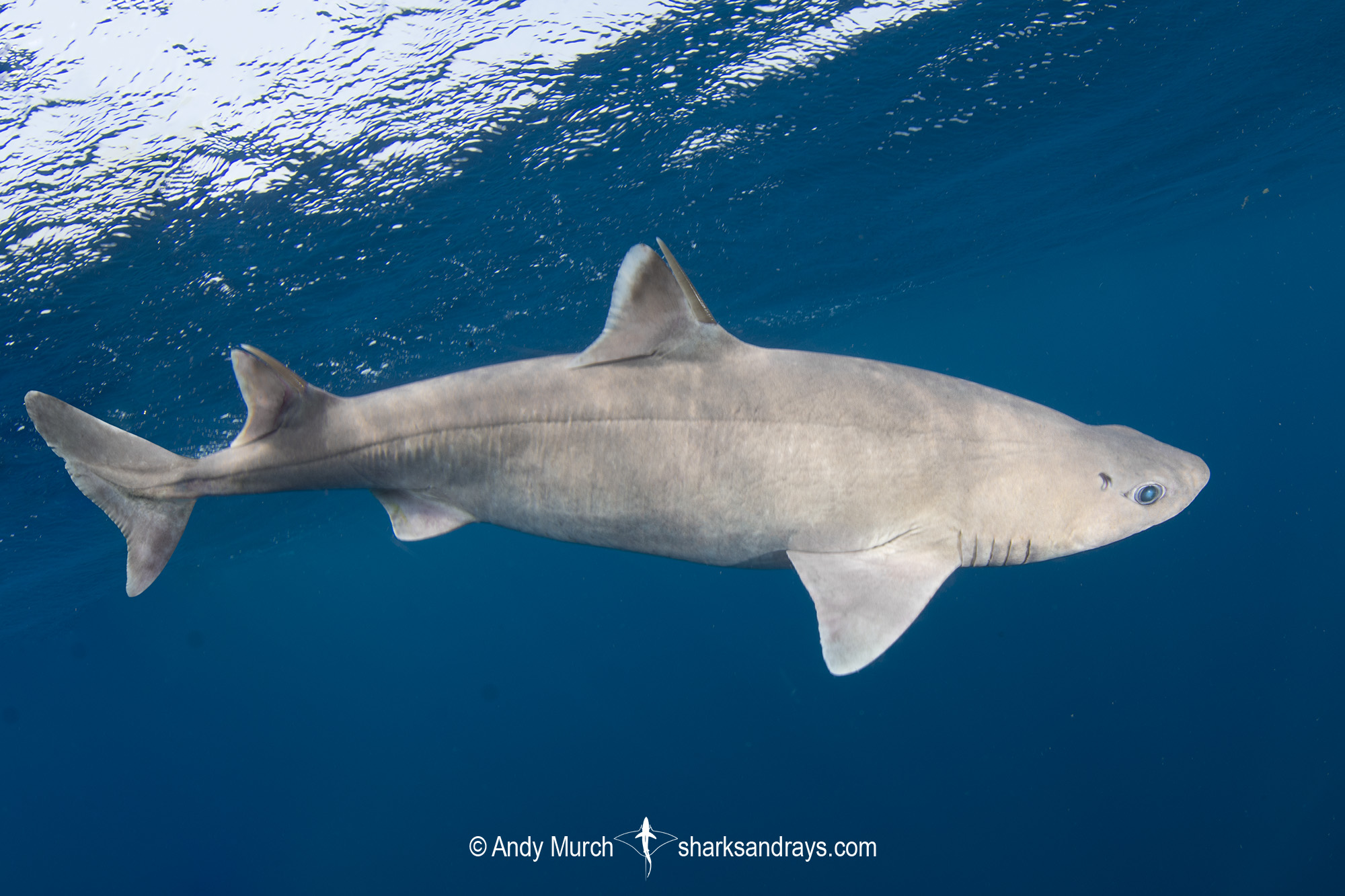Common names
Cuban Dogfish.
Binomial
Squalus cubensis.
Synonyms
None.
Identification
A small squaloid shark with a snout length slightly longer than mouth width, and a short, narrow anterior nasal flap. Two dorsal fins with long anterior spines. First dorsal fin origin slightly posterior to pectoral fin insertion. Second dorsal about half the height of first dorsal. Pectoral fins have pointed free rear tips.
Dorsal coloration grey or olive-grey. Ventrum pale. Dorsal fins have black tips. Caudal fin has black or dusky areas and a bright white posterior margin. Pectoral and pelvic fins have white or pale posterior margins. Body unmarked.
Size
Maximum length at least 65cm (J. Castro). Size at birth 25-27cm.

Conservation Status
LEAST CONCERN
The Cuban dogfish is an occasional bycatch in deep-water fisheries in the Gulf of Mexico and Caribbean Sea, but there is little fishing within its range. Overall the species is stable and thought to be increasing in numbers.

Habitat
A tropical-temperate deepwater species from the continental shelf and upper slope. Found at depths between 50-904m.
Distribution
The Cuban dogfish is found in the western Atlantic from North Carolina to Florida (including the Gulf of Mexico), throughout the Caribbean Sea, and southwards to Argentina.
Reproduction
An aplacental viviparous species. Lecithotrophic, wherein the embryos consume all of the food within the egg case but do not feed once internal hatching takes place. Litter size 18-23. Birthing probably takes place in February/March.
Diet
The Cuban dogfish feeds on benthic fishes and invertebrates. Tagged specimens were caught on a variety of baits including cobia, bonito and shark.
Behavior
Known to form large, dense schools.
Reaction to divers
Cuban dogfish inhabit water too deep to be encountered by divers. Captured specimens showed no aggressive behaviour.
Diving logistics
With a minimum depth of 50m in the Gulf of Mexico (where it is abundant) there is a chance that deepwater chumming could encourage a Cuban dogfish or two to rise to recreational limits.
There is also a chance that this species may be randomly encountered by technical divers, but I have not heard of any sightings.
Similar species
Spiny Dogfish Distinguished by white spots on lateral line, and lack of black tips on dorsal fins.
Roughskin Spurdog Distinguished by lack of black tips on dorsal fins and position of first dorsal origin, which is significantly posterior to free rear tip of pectoral fins.






